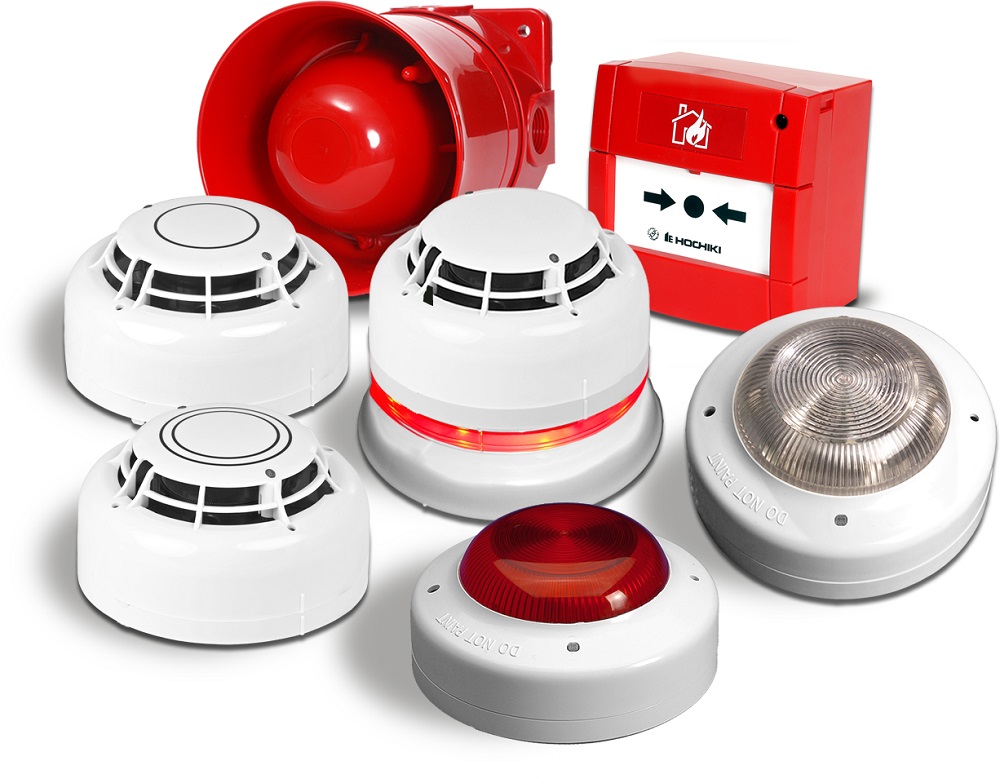Conventional fire detectors

ALG-EPhotoelectrical smoke detector SLR-E
- Operating voltage 9 ~ 30VDC (application of the special base YBO-R/12V also enables the connection to standard security systems with working voltage of 10 ~ 15VDC).
- Pulse operation of photoelectric chamber - very small consumption in a normal state.
- Elegant design of low profile - only 46 mm including the base.
- "Flat response" technology - high reliability in smoke detection (almost the same response to all kinds of smoke), possibility of application even in cases in which ionisation smoke detectors have been applied until now).
- Simple installation and maintenance, protection of detection chamber from dirt, dust and insects by a special stainless steel mesh.
- A high level of protection from external electro-magnetic influences and noise.
- Available in intrinsically safe (EX) variant, marked as SLR-E-IS (BASEEFA certificate).
- EN54 Part 7 standard
Combined heat detector DCD-1E/2E
- Operating voltage 9 ~ 30 VDC. (Application of the special base YBO-R12V also enables the connection to standard security systems with operating voltage 10 ~ 15 VDC).
- A very small consumption in a normal state.
- Elegant design of low profile - only 48 mm including the base.
- Combination of gradient and level detection.
- Available in variants 60 C ° and 90 C ° of fixed thermal level, and the two types of gradients (DCD-1E - Grade1, DCD-2E - Grade 2).
- A very simple installation and maintenance.
- Especially convenient for application in cases in which smoke detectors cannot be applied because of the constant presence of smoke or dust (e.g. kitchens, bathrooms).
- EN54 Part 5 standard.
Flame detector HF-24
- Operating voltage 15 ~ 30 VDC.
- Low profile for this kind of detector- 60 mm including the base.
- High response and reliability in detection of ultra-violet (UV) radiation emitted by flame.
- Pulse operation - very small consumption in a normal state.
- Complete elimination of false alarms influenced by sun radiation and external electro-magnetic influences and noise.
- Especially convenient in cases when, in the initial stage of fire, flame is expected before smoke particles, which is specific for easily inflammable materials. It is also efficient in fire detection at materials such as audio, video and computer tapes.
- EN54 Part 10 standardEN54 Part 10 standard.
INFRA-BEAM photoelectric smoke detector SPB-ET
- Operating voltage 15 ~ 33 VDC, operating range 15m x 100m.
- Detection of smoke in the early phase in big premises (halls, store-houses, museums, theatres, cathedrals, etc), where the application of point detectors is expensive and impractical.
- Transmitter and receiver are installed one opposite other on wall or some other carrier, at the distance 5~100m, by two-wire inter-connection. In the case of fire, smoke particles reduce the quantity of IC radiation, which, emitted by transmitter, comes to the receiver, which then interprets it as alarm condition.
- Great linearity in operating and automatic compensation of environment conditions changes.
- The principle of alarm/fault signalisation and two-wired cabling enables complete compatibility with conventional fire protection control panels.
- Selectable sensitivity in 3 alarm levels: 25%, 50% and 75% of IC obscuration.
- EN54 Part 12 standard.
Reflective BEAM smoke detector SRA-ET
- Operating voltage 15 ~ 30 VDC, covering area 10m x 30m.
- Detection of smoke in early phase in big premises (halls, storehouses, museums, theatres, cathedrals, etc), where the application of point detectors is expensive and impractical.
- Control transmitting-receiving unit and reflector are installed one opposite the other on wall or some other carrier at the distance of 5 ~ 30m, without any electrical inter-connection. Smoke particles generated by fire reduce the quantity of IC radiation, which, after the emission and reflection, comes back to the control unit, which then interprets it as alarm condition.
- Great linearity in operating and automatic compensation of environment conditions changes.
- Principle of signalisation of fire/fault and two-core installation enable complete compatibility with conventional fire protection control panels.
- EN54 Part 12 standard.


